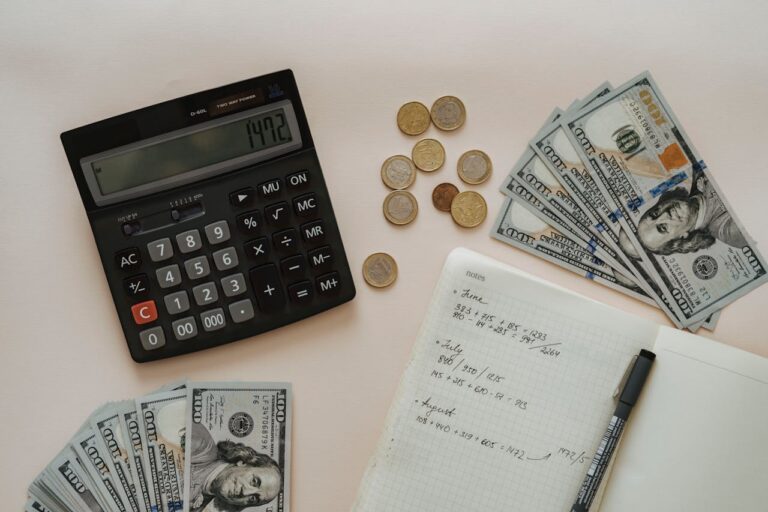How to Build a Solid Emergency Fund: Tips for 2024

In today’s unpredictable world, having a robust emergency fund is more critical than ever. Whether you’re dealing with unexpected medical expenses, sudden job loss, or unexpected home repairs, a well-stocked emergency fund can provide financial security and peace of mind.
Why do you need an emergency fund?
An emergency fund is essential because it provides financial security and peace of mind by acting as a buffer against unexpected expenses like car repairs or medical emergencies, preventing debt accumulation. It helps you avoid high-interest debt by eliminating the need to resort to credit cards or loans for unforeseen costs, ultimately saving you money. Additionally, it maintains financial stability by protecting long-term savings and retirement accounts, ensuring your financial goals remain on track during income loss or financial upheaval. Finally, an emergency fund empowers you to make better financial decisions independently, without relying on external help, and prevents the need for hasty or suboptimal choices under financial pressure.
1. Financial Security and Peace of Mind
Life is full of surprises—some pleasant, others not so much. From car repairs to medical emergencies, unexpected expenses can arise at any moment. An emergency fund acts as a financial buffer, helping you handle these surprises without going into debt. Knowing you have a safety net can significantly reduce financial stress. This peace of mind allows you to focus on other aspects of your life without constantly worrying about what might go wrong.
2. Avoiding High-Interest Debt
Without an emergency fund, you might resort to high-interest credit cards or loans to cover unexpected costs. This can lead to a cycle of debt that’s hard to break. By having funds available for emergencies, you avoid the high interest and fees associated with borrowing money, ultimately saving you a significant amount in the long run.
3. Maintaining Financial Stability
An emergency fund helps you avoid dipping into long-term savings or retirement accounts when emergencies arise. This ensures that your future financial goals remain on track. In the event of job loss or a significant reduction in income, an emergency fund can help you maintain your current lifestyle and cover essential expenses until you regain financial stability.
4. Empowerment and Financial Independence
With an emergency fund, you’re in a better position to make informed financial decisions. You’re not forced into making hasty or less-than-ideal choices due to financial pressure. An emergency fund provides a sense of financial independence. It ensures that you can handle financial challenges without relying on friends, family, or payday loans.
How Much Should You Save?
Determining the appropriate amount for your emergency fund depends on various factors, including your financial situation, lifestyle, and risk tolerance. Here’s a detailed guide to help you figure out how much you should save:
1. General Guidelines
- Three to Six Months of Living Expenses: Financial experts typically recommend saving enough to cover three to six months’ worth of living expenses. This range provides a solid buffer for most unexpected events, such as job loss, medical emergencies, or major repairs.
2. Things to consider
- Your monthly expenses: Focus on your essential monthly expenses to calculate the baseline for your emergency fund. These typically include housing costs (rent or mortgage), utilities (electricity, water, gas, internet), groceries and household supplies, transportation (car payments, fuel, public transit), insurance (health, auto, home), minimum debt payments (credit cards, loans), basic personal expenses (medications, basic clothing).
- Income Stability: If your job is secure and you have a stable income, you might lean toward the lower end of the recommended range. If your income fluctuates or is less secure, aim for the higher end.
- Dependents: Always consider the number of dependents you support. More dependents mean higher expenses, necessitating a larger emergency fund.
- Existing Savings and Investments: Assess your current savings and investments. If you have other accessible funds or investments, you might adjust the amount you allocate to your emergency fund.
- Health and Lifestyle: If you have ongoing medical expenses or a lifestyle that requires higher spending, factor these into your calculations.
- High-Deductible Insurance Plans: If you have a high-deductible health insurance plan, ensure your emergency fund can cover the deductible and other out-of-pocket maximums.
- Variable Income: For freelancers, contractors, or those with irregular income, it’s wise to save closer to six months or more of living expenses to account for potential income gaps.
- Debt Levels: High debt levels might require a larger emergency fund to ensure you can continue making payments even during financial hardships.
Steps to Building Your Emergency Fund
- Set a Savings Goal: Determine the total amount you need for your emergency fund. Break this down into smaller, manageable monthly savings targets to make the goal less daunting.
- Pay Yourself First: Each pay, allocate a specific amount to your savings before you spend on anything else. Treat your emergency fund contribution like a non-negotiable bill.
- Automate Your Savings: Set up automatic transfers from your checking account to your savings account so you consistently save a portion of your income without having to do it manually.
- Track Your Spending: Monitor your monthly expenses to identify areas where you can cut back. Use budgeting apps or spreadsheets to keep track of your finances and ensure you’re on target with your savings goals.
- Adjust Your Budget: Regularly review and adjust your budget to ensure you’re saving as planned. As your financial situation changes, tweak your budget to accommodate higher savings contributions.
Common Mistakes to Avoid
- Using It for Non-Emergencies: Avoid dipping into your emergency fund for non-essential purchases, such as vacations, gadgets, or luxury items. Clearly define what constitutes an emergency (e.g., job loss, medical emergencies, urgent home repairs) and commit to using the fund only for these situations. Maintain a separate savings account for discretionary spending.
- Not Replenishing After Use: If you use it for a legitimate emergency, make replenishing your emergency fund a priority. Set up a plan to gradually restore it to its target amount by resuming automatic transfers or allocating a portion of your income each month until it’s fully replenished.
- Underfunding the Account: Not saving enough to cover at least three to six months of essential expenses, makes you vulnerable to financial instability. Regularly review and adjust your savings goal based on your current living expenses. Aim to save more if you have irregular income or higher financial responsibilities.
- Keeping Funds Too Accessible: Avoid storing your emergency fund in an account that’s too easily accessible, which leads to the temptation to use it for non-emergencies. Place your emergency fund in a high-yield savings account or money market account that is not linked to your primary checking account. This makes it slightly harder to access, reducing impulsive withdrawals.
- Investing Emergency Funds: Avoid investing your emergency fund in stocks, bonds, or other volatile assets that could lose value when you need the money most. Keep your emergency fund in a liquid and low-risk account, such as a high-yield savings account, to ensure it’s readily available and retains its value.
Building an emergency fund should be a top priority in your personal finance planning. It provides the security to make informed decisions, maintain your lifestyle during financial disruptions, and reduce stress. Start small if necessary, but begin saving today to create a robust safety net for your future. This provides a foundation and helps you build the habit of saving. Gradually increase your emergency fund by setting aside a certain percentage of your income each month. Automate transfers to your savings account to make the process easier.
